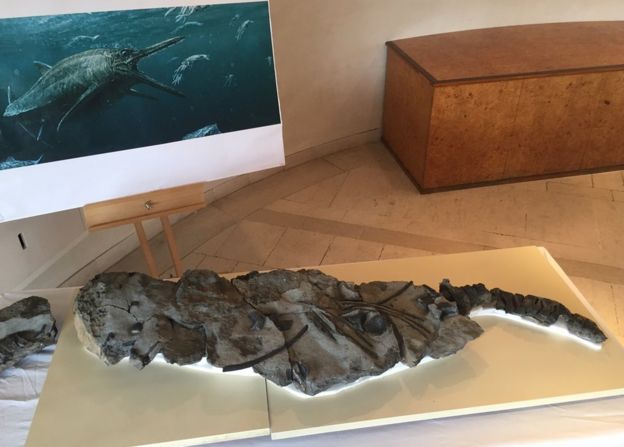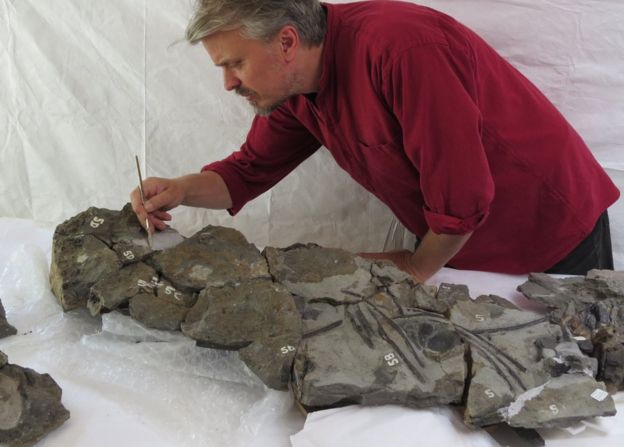The Storr Lochs Monster
"Look, a lot of specimens are in museums for a long time before they're studied, so it's easy to go back to that trope [criticism that a half-century has passed since the discovery of an ancient ichthyosaur, its bones in storage, no research undertaken]."
"I don't think there were any here at the time [1966], actually [vertebrate paleontologists]."
"One of the reasons I came here is that I thought it was really under-studied [Scotland's fossils]."
"There's a good chance it's a new species just because it's from a part of the world and a place in time where very few fossils are known. We know that quite a lot was happening then [Middle Jurassic Period]. On land, the tyrannosaurs were getting their start, and it's probably when the first birds were flying around, and in the ocean you had this big turnover event when smaller marine animals were replaced by bigger ones."
"So it's frustrating because it seems like an active period in evolution but one with very few fossils [discovered in Scotland]."
"So few people have ever looked for fossils here. Scotland isn't what you think of when you think of fossils. But there are a lot out there waiting to be found."
Steve Brusatte, researcher, vertebrate paleontologist, University of Edinburgh

Artist's rendering of Storr Lochs Monster. Credit: Todd Marshall
There is a reason that the fossil remains were unstudied for a half-century.
For one thing the science of vertebrate paleontologists had no representatives in Scotland until very recently when Dr. Brusatte entered the picture. For another, the fossil's vertebrae were encased in hard stone, and a way had to be found to free the marine reptile skeleton from its encased condition. So the valued relic of primeval times was carefully placed in storage until some future time when it might become feasible to dedicate time and expertise to the full exploration of what it represents.
That time has come for the fossil's preservation awaiting scientific enquiry to finally render under expert scrutiny details that will place the beast within a recognized coterie of similar such creatures, or persuade the experts that they are examining a totally new, as-yet-undiscovered species. Dr. Brusatte in his early research appears of the opinion that the ichthyosaur shares similarities with marine reptiles discovered in other geographic locations.
The educated theory is that the Storr Lochs Monster would have resembled a dolphin, attaining the size of a small boat, a predator of a sea monster whose mouthful of conical teeth were used to full advantage as a carnivore feasting on fish, itself representing the top of the marine food chain. Despite which, Dr. Brusatte is convinced that once their investigation is complete this find will add a new species to the roster of identified primal beasts.
 The fossilised skeleton will be analysed by palaeontologists
The fossilised skeleton will be analysed by palaeontologists  |
| The fossil will eventually go on public display -- Nigel Larkin |
"The Storr Lochs Monster highlights the rich fossil heritage of Skye."
"Collaborations between scientists at National Museums Scotland, the University of Edinburgh and elsewhere in the UK are beginning to shed new light on the Middle Jurassic of Skye - a time when dinosaurs were dominant on land but mammals were also diversifying."
Dr. Nick Fraser, keeper of natural sciences, National Museums Scotland
Labels: Archaeology, Bioscience, Science, Scotland

0 Comments:
Post a Comment
<< Home